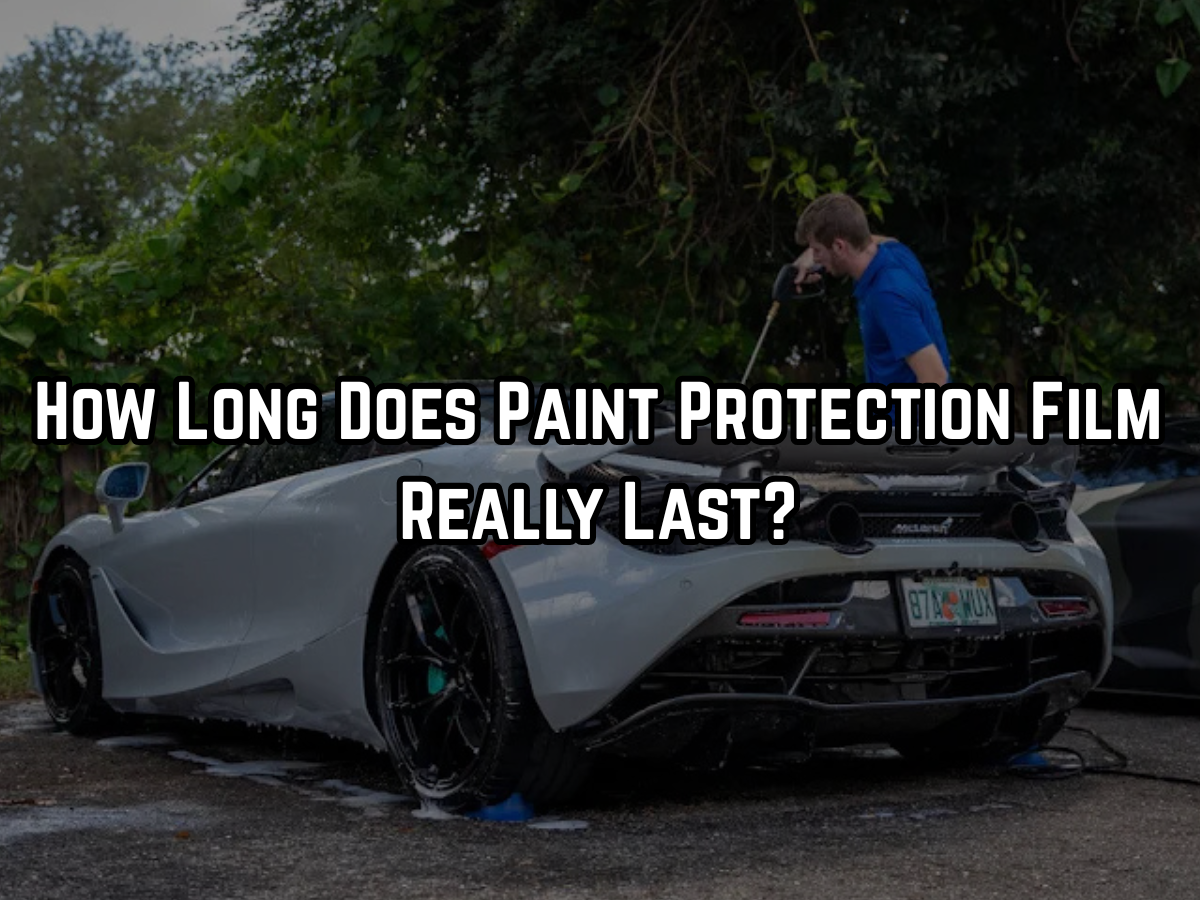5 Signs Your Ceramic Coating Needs Maintenance
Ceramic coatings are known for being durable and low maintenance, but they’re not no maintenance.
Even the best professional-grade coatings need routine care to stay effective. If you’ve noticed your car doesn’t bead water like it used to or the surface feels rough, it might be time to refresh that layer of protection.
Here’s how to tell when your ceramic coating needs maintenance, and what you can do about it.
Key Takeaways
- Watch for reduced water beading or sheeting.
- A dull or rough surface often means contamination buildup.
- If water spots or dirt stick easily, your coating needs help.
- Swirl marks and fading can signal breakdown.
- Annual maintenance extends your coating’s lifespan.
What Is Ceramic Coating Maintenance?
Before we get into signs, let's clear this up.
Ceramic coating maintenance means doing what’s needed to keep your coating performing at its best. This includes:
- Safe hand washing
- Decontamination (removing iron or tar)
- Topping with a maintenance spray or booster
- Avoiding harsh chemicals
It does not mean reapplying a full ceramic layer every few months.
With proper care, professional ceramic coatings can last anywhere from 2 to 7 years, depending on the brand and conditions.
Sign #1: Water No Longer Beads or Sheets Off
One of the main benefits of ceramic coating is its hydrophobicity, its ability to repel water.
If water used to bead tightly or sheet off fast, but now just sits there or forms large puddles, your coating is likely:
- Contaminated
- Wearing thin
- Needing a booster
Fix:
- Wash the car thoroughly using a pH-neutral soap.
- Clay bar the surface to remove bonded contaminants.
- Use a ceramic-safe topper like a SiO₂ spray sealant to revive hydrophobic behavior.
| Water Behavior | Coating Status |
|---|---|
| Tight beads, fast runoff | Healthy & active |
| Flat puddles, slow draining | Needs maintenance |
Sign #2: Surface Feels Rough or Gritty
Your coated car should feel slick—almost like glass.
If you run your hand over the surface and feel grit, roughness, or resistance, it’s a sign that contaminants like brake dust, sap, or road grime have bonded to the coating.
Left untreated, these can wear down the ceramic layer.
Fix:
- Perform chemical decontamination using an iron remover.
- Use a clay bar (gently) with plenty of lubrication.
- Follow up with a ceramic detail spray or light topper.
Even with a coating, contaminants can still stick to the top layer over time.
Sign #3: Water Spots, Bird Droppings, and Bugs Are Harder to Remove
Ceramic coatings are designed to make cleanup easier. But if you’re noticing:
- Bug splatter that won’t wash off
- Bird droppings etching into the paint
- Water spots that leave rings after washing
…it means the top layer of your coating may be clogged or degraded.
Fix:
- Use a coating-safe water spot remover.
- Try a panel wipe or prep spray to remove old residues.
- Reapply a ceramic booster spray after cleaning.
If the problem persists, it may be time for professional decontamination and inspection.
Sign #4: Surface Looks Dull or Loses Its Deep Gloss
Ceramic coatings are known for enhancing gloss and clarity.
If your vehicle starts to look dull, even after washing, there are a few likely reasons:
- The coating is dirty or contaminated
- The top layer is oxidizing
- There’s no longer any SiO₂ or TiO₂ protection remaining
This is especially common on vehicles parked outside year-round.
Fix:
- Use an iron fallout remover to lift hidden contamination.
- Polish lightly with a coating-safe polish (non-abrasive).
- Apply a ceramic booster or have a professional do a full refresh.
Sign #5: You’re Starting to See Swirl Marks or Light Scratches
Ceramic coatings add some protection against light scratches, but they’re not invincible.
If you’re starting to see swirl marks from improper washing or fine scratches from road debris, it means your coating may be thinning.
Once the protection wears off, your clear coat is exposed again.
Fix:
- Inspect paint under bright light.
- Consider light polishing with a coating-safe polish to reduce swirls.
- Have a professional assess if the coating needs reapplication or top-layer reinforcement.
If swirl marks are visible on multiple panels, your coating has likely lost its protective layer.
Maintenance Schedule Cheat Sheet
| Task | Frequency |
|---|---|
| Hand Wash (2-bucket method) | Every 1–2 weeks |
| 2Use pH-neutral soap | Every wash |
| Iron remover / decontamination | Every 3–6 months |
| Apply ceramic booster | Every 3–6 months |
| Annual inspection | Once a year |
Final Thoughts
Ceramic coatings are tough, but they’re not bulletproof. To keep your car looking slick and protected, regular maintenance is key.
Watch for changes in how your coating feels, looks, and repels water. Catching these signs early can save you from bigger issues later.




